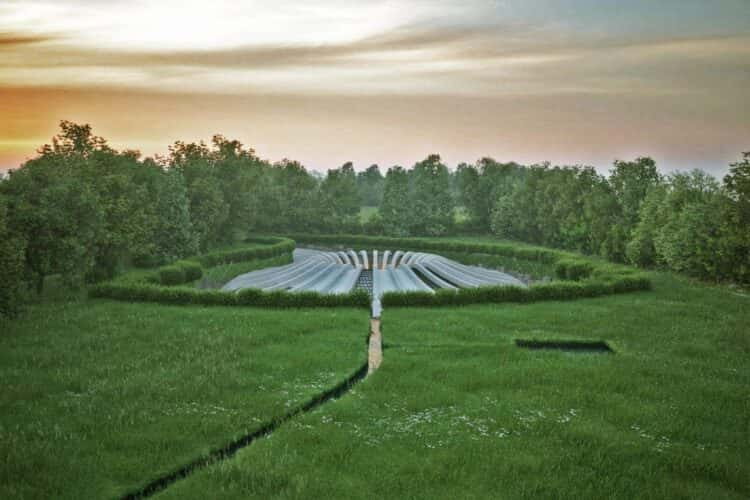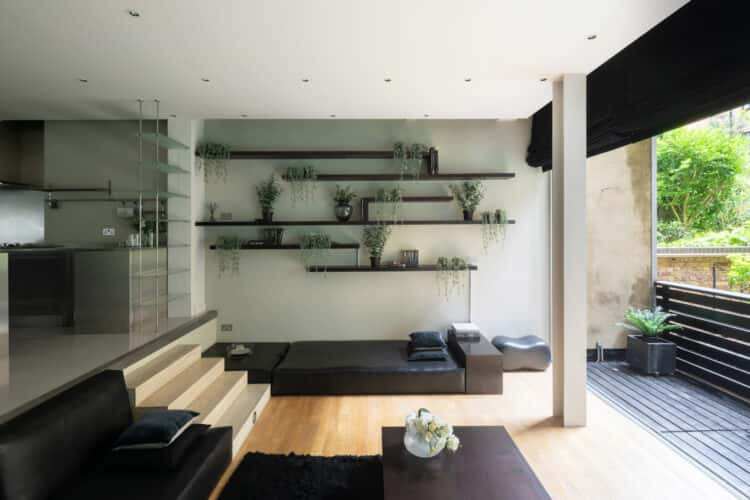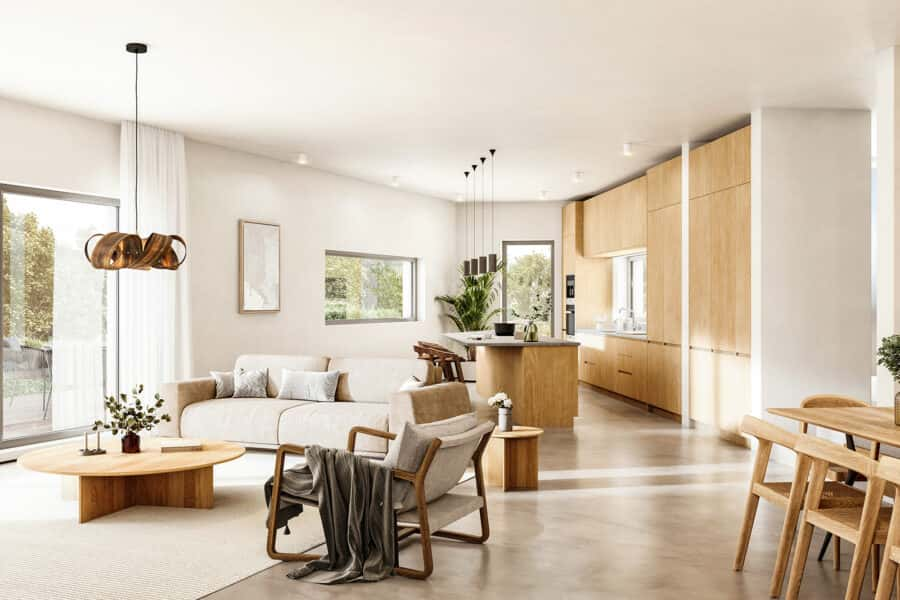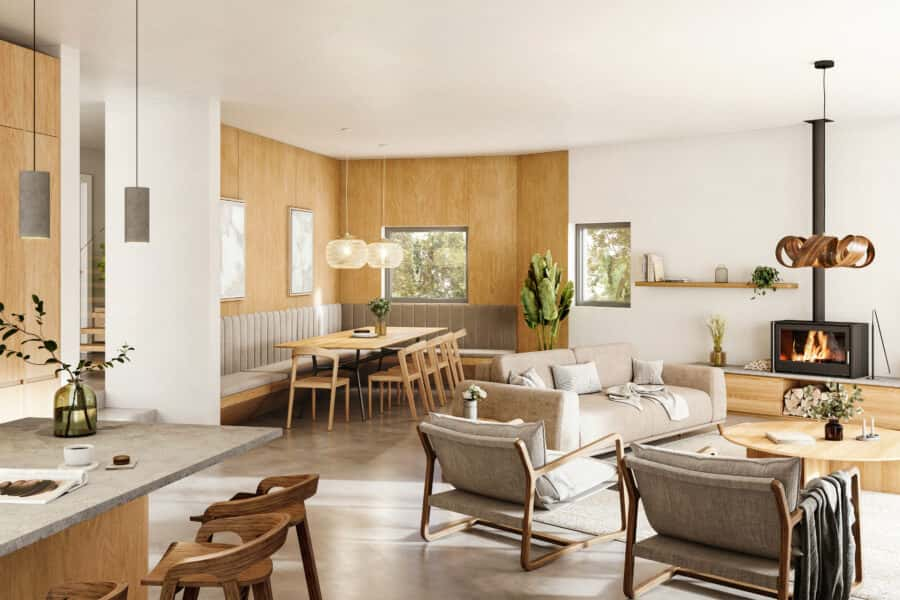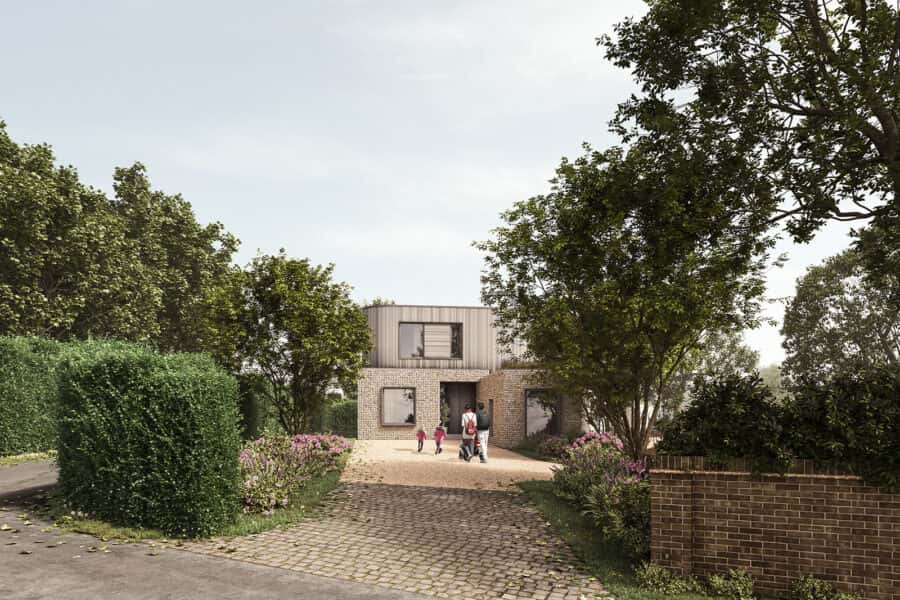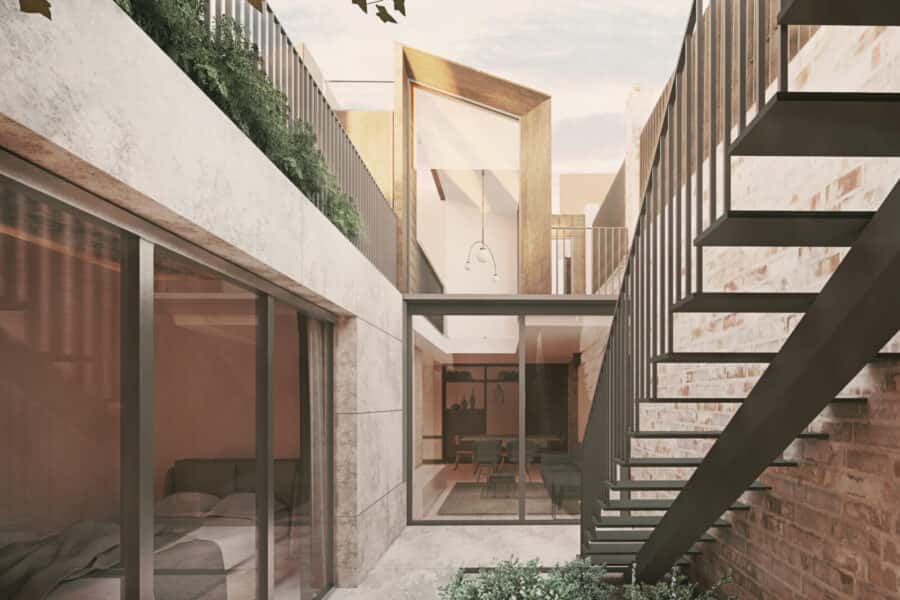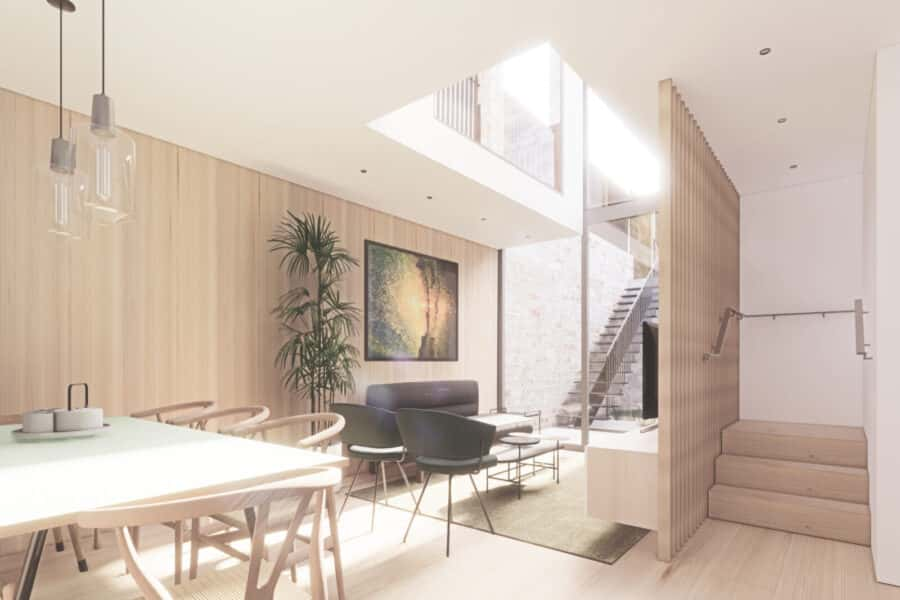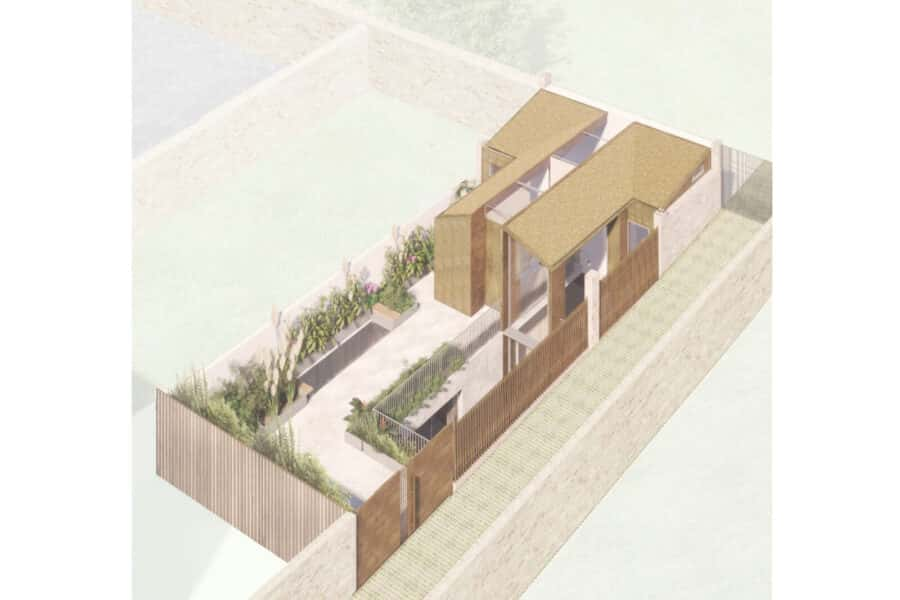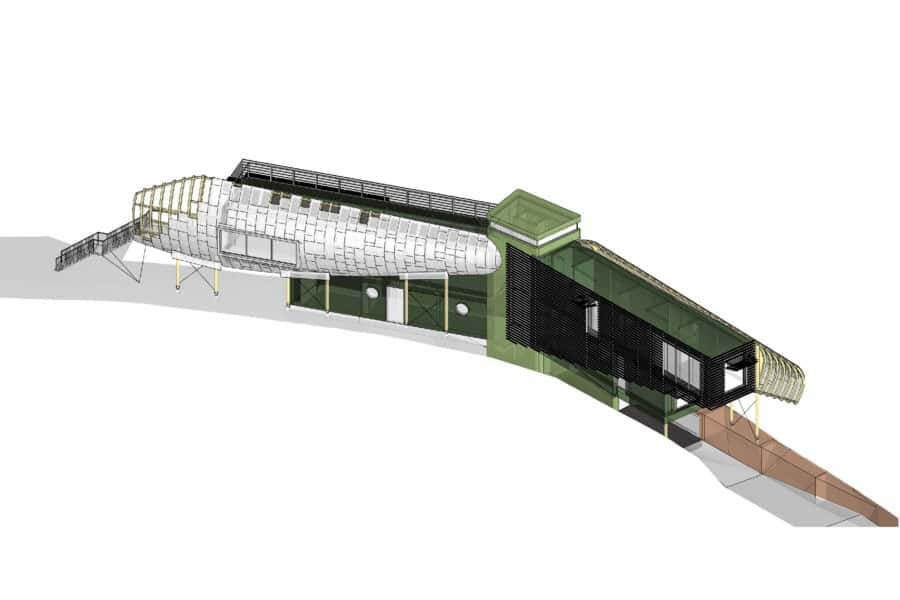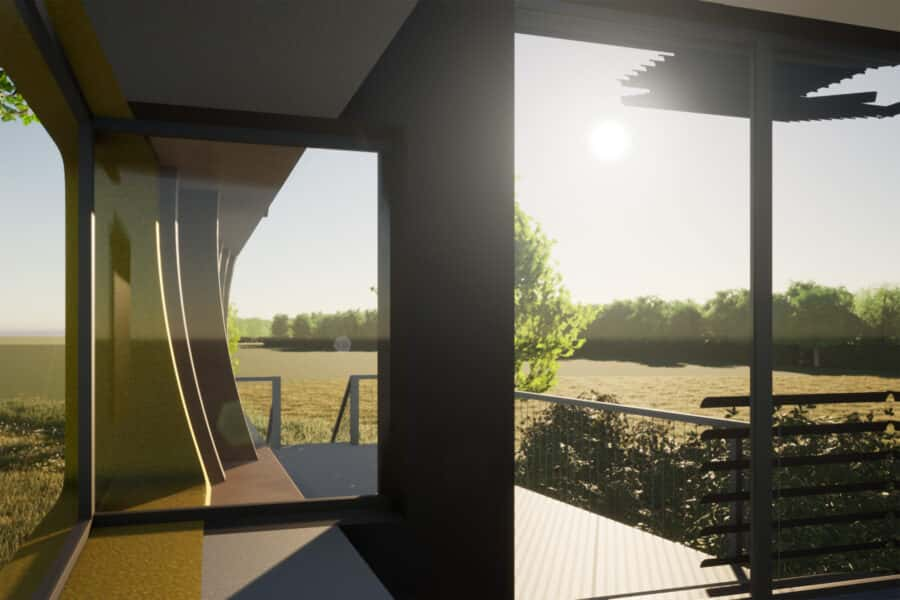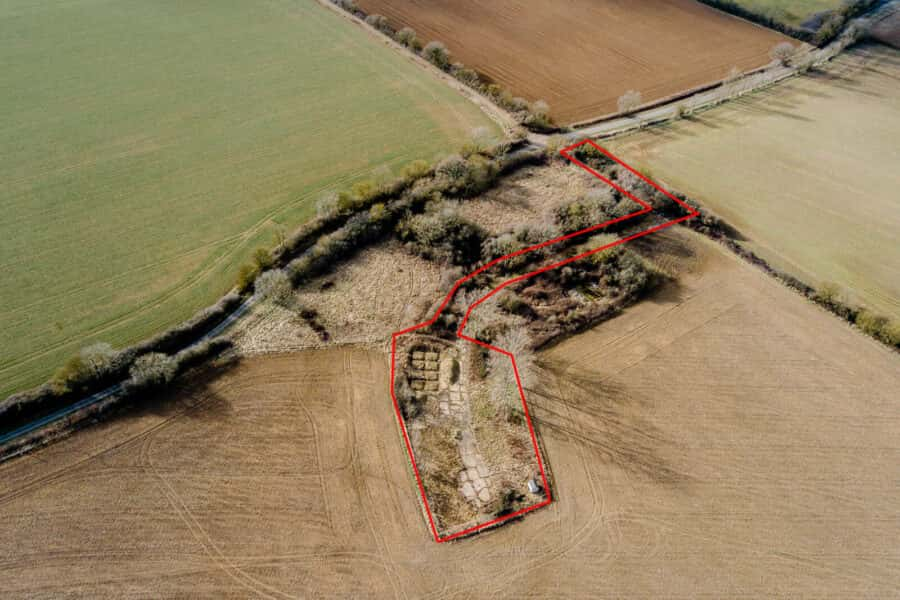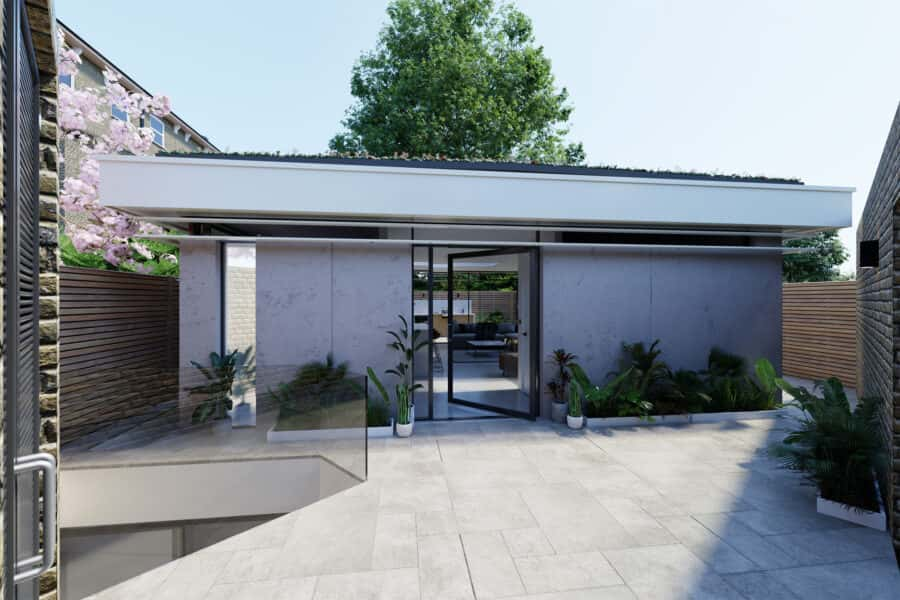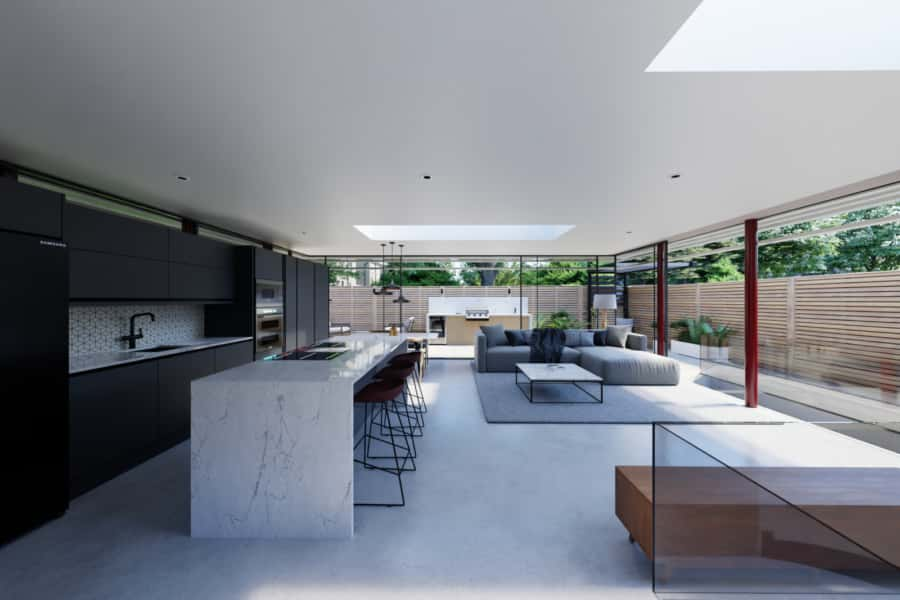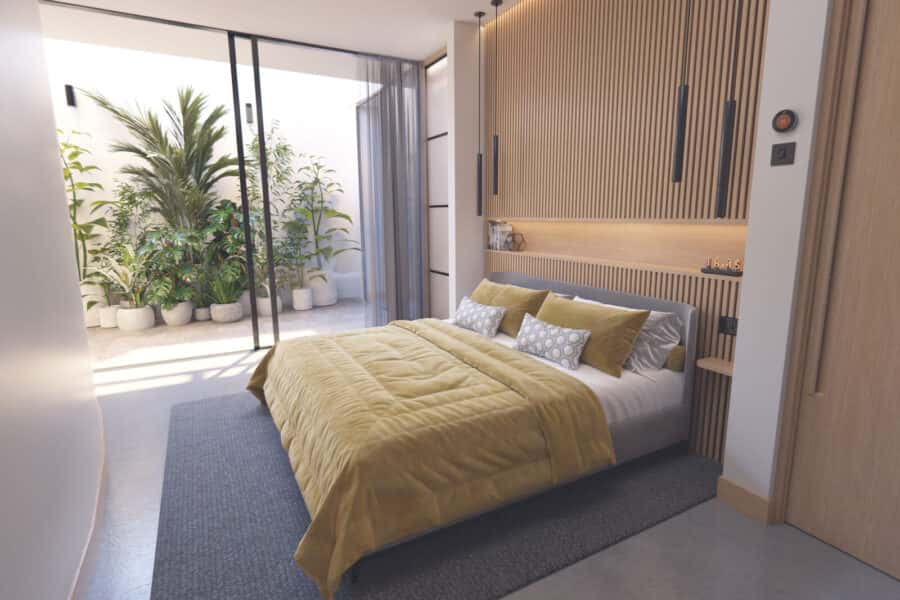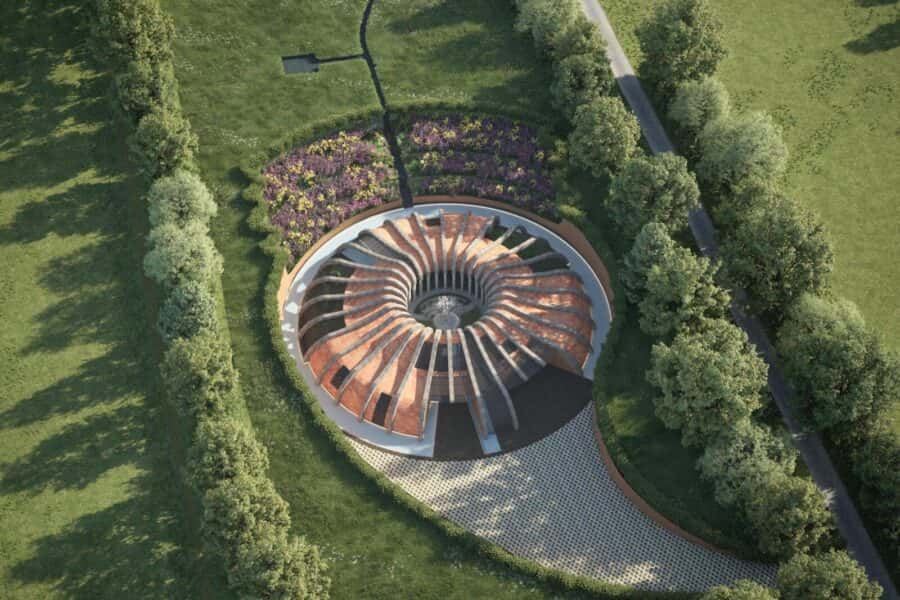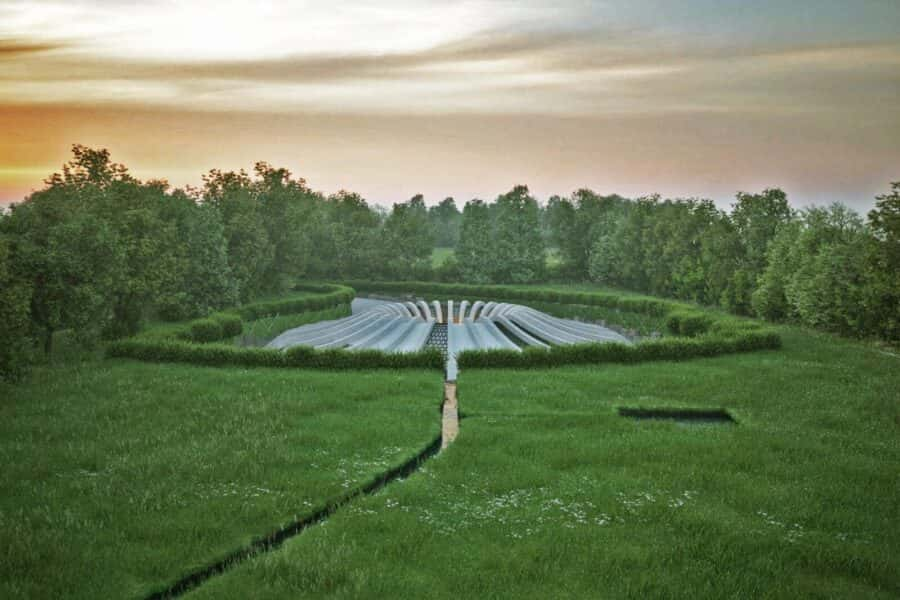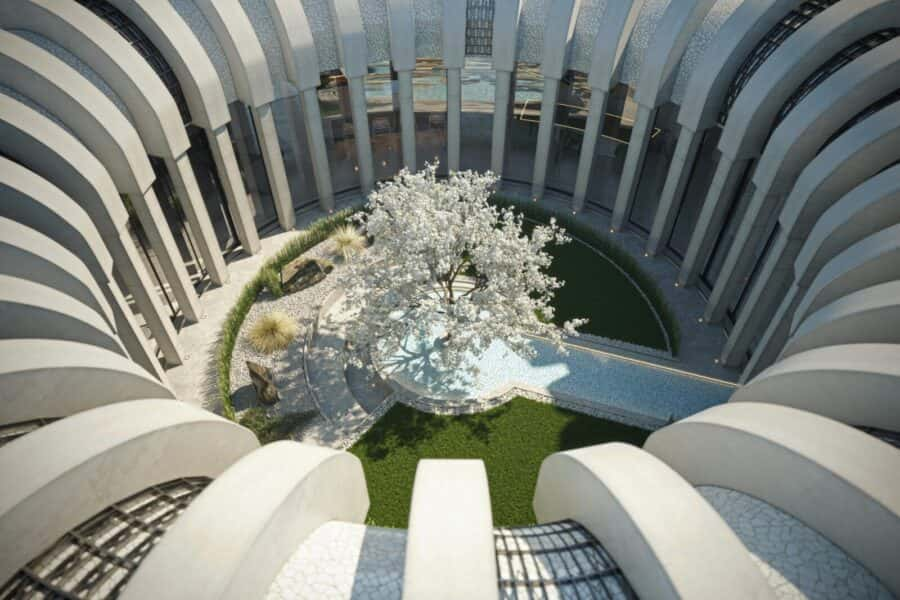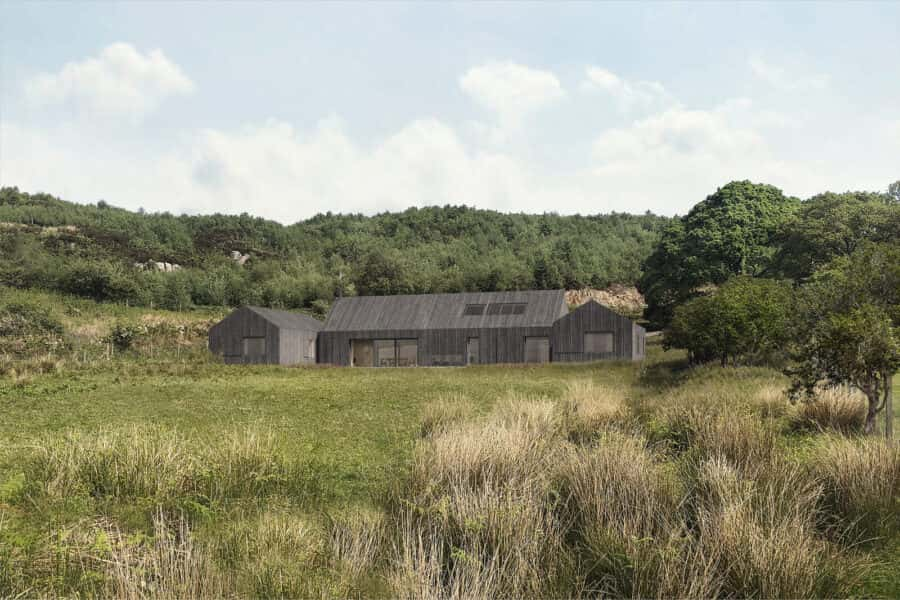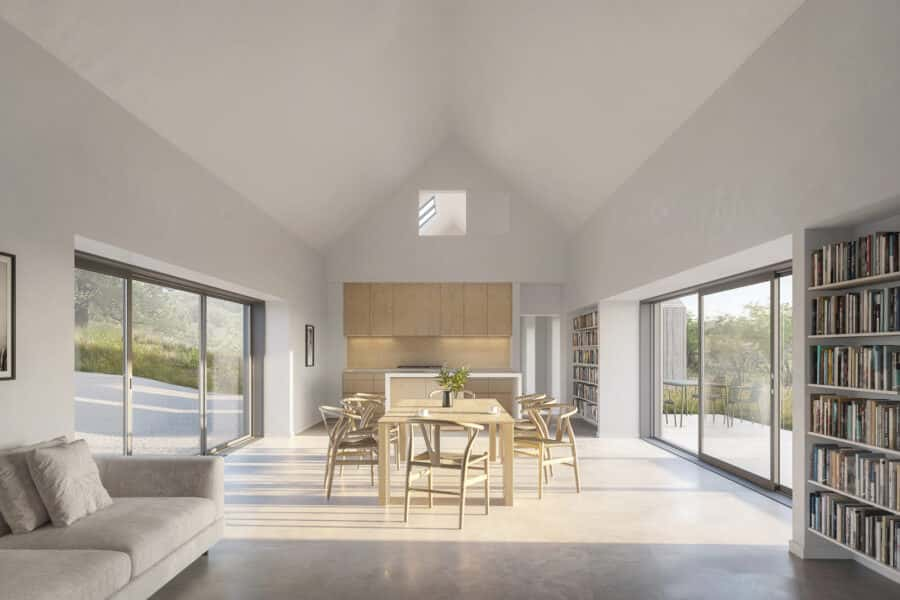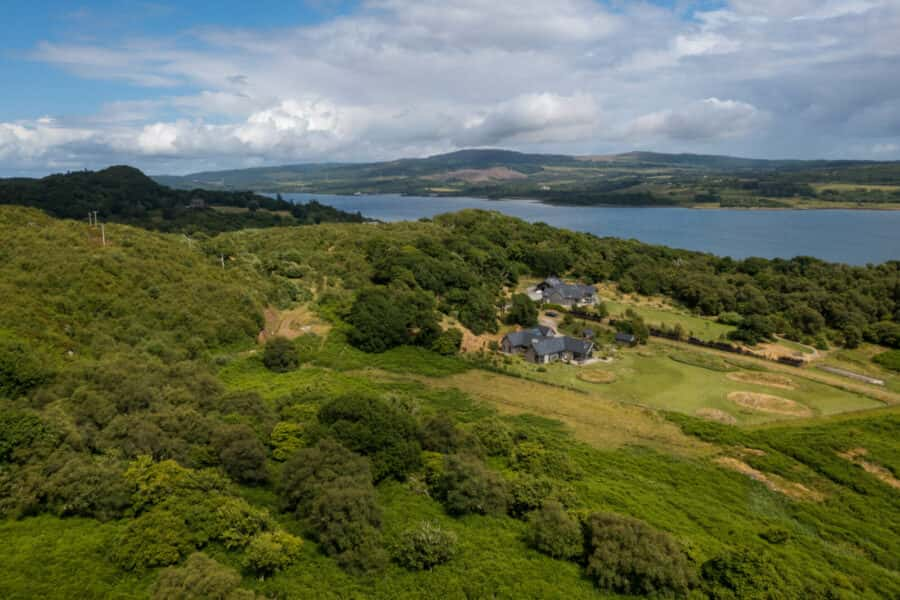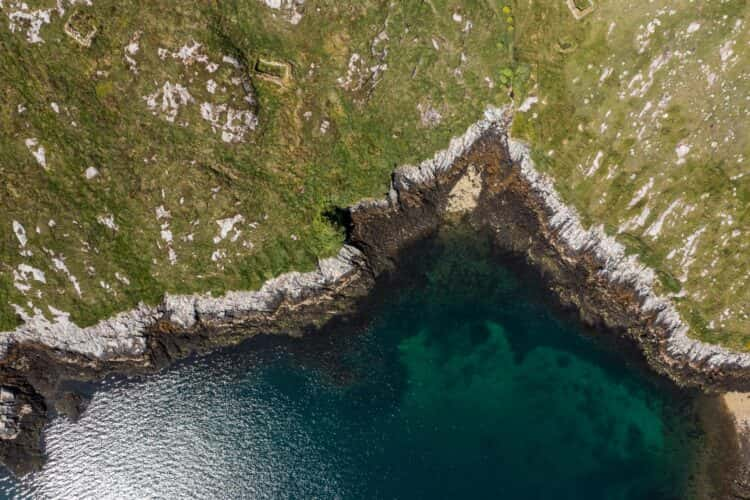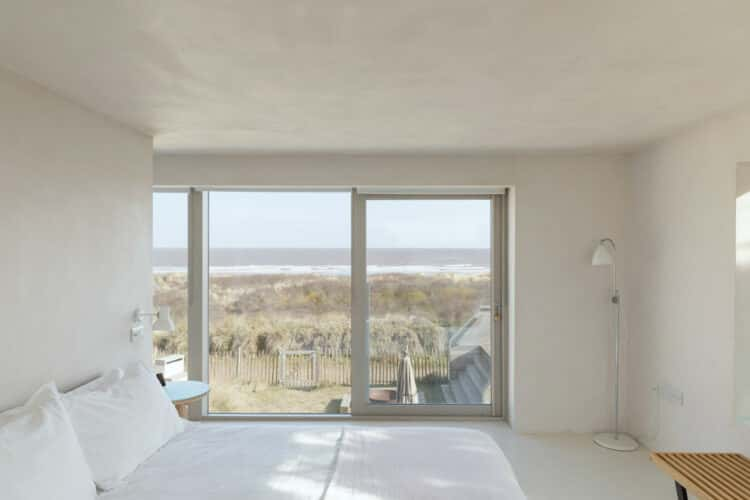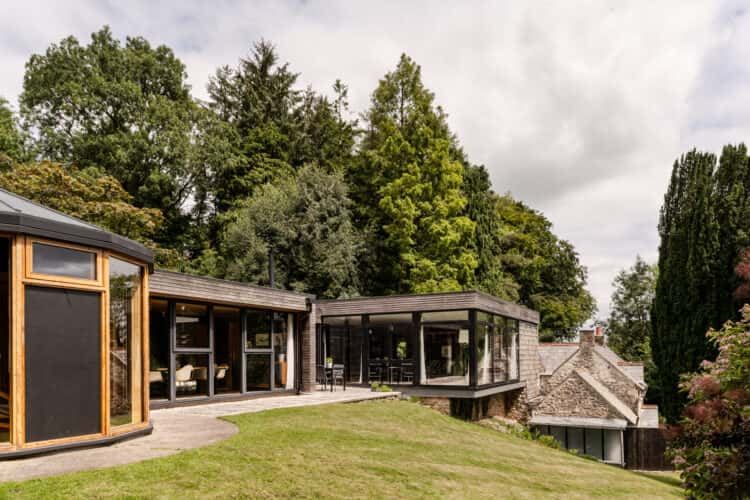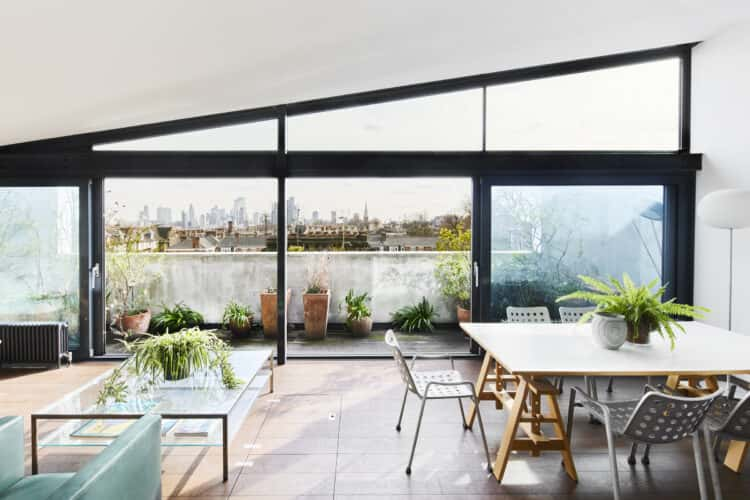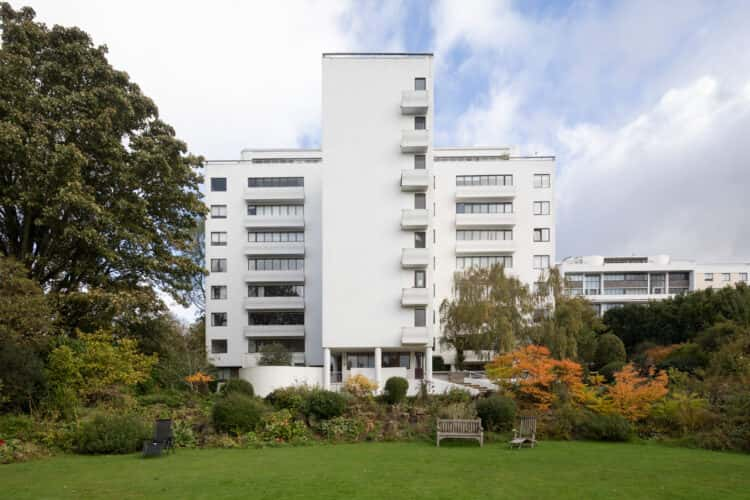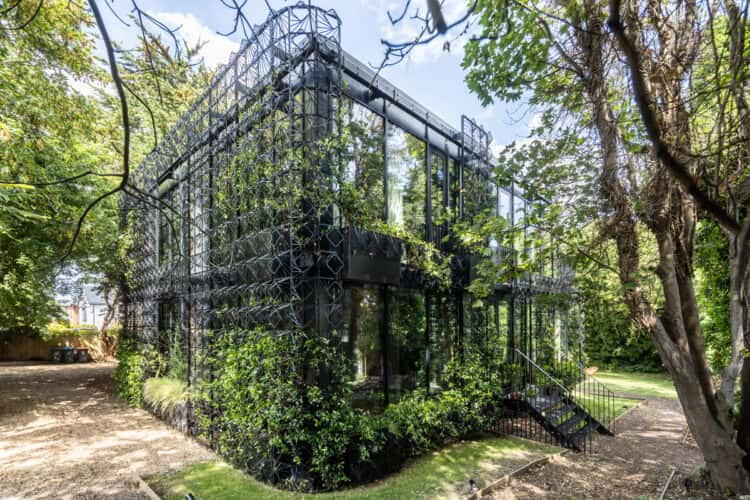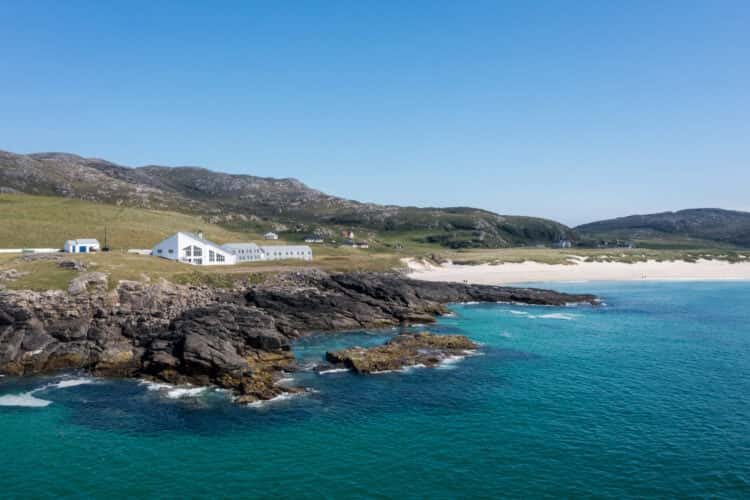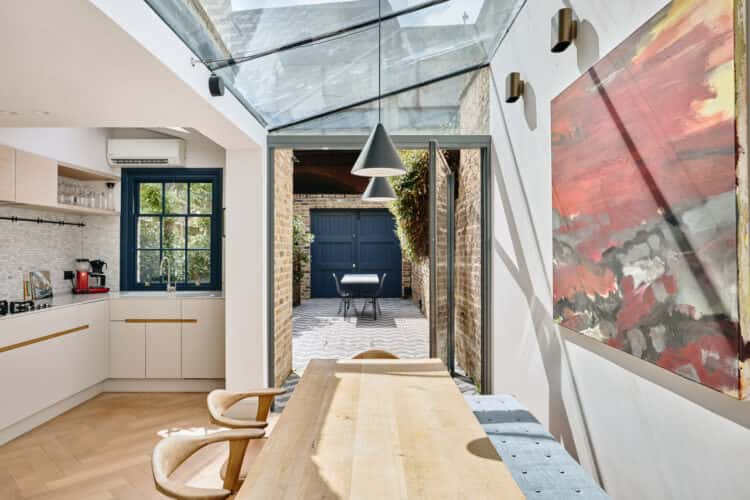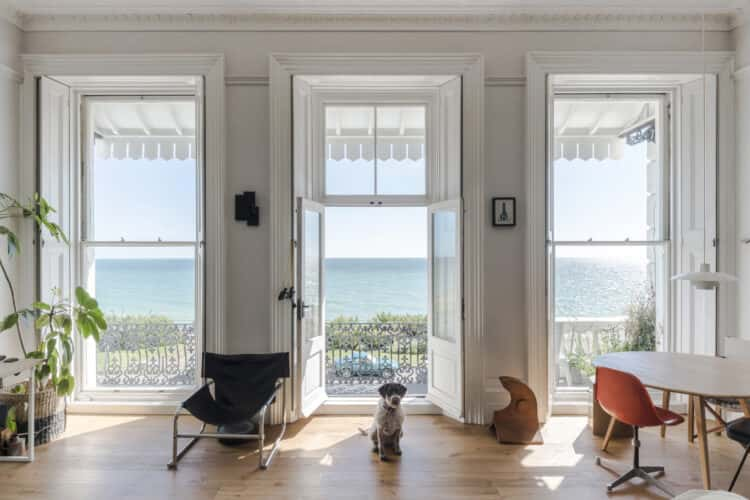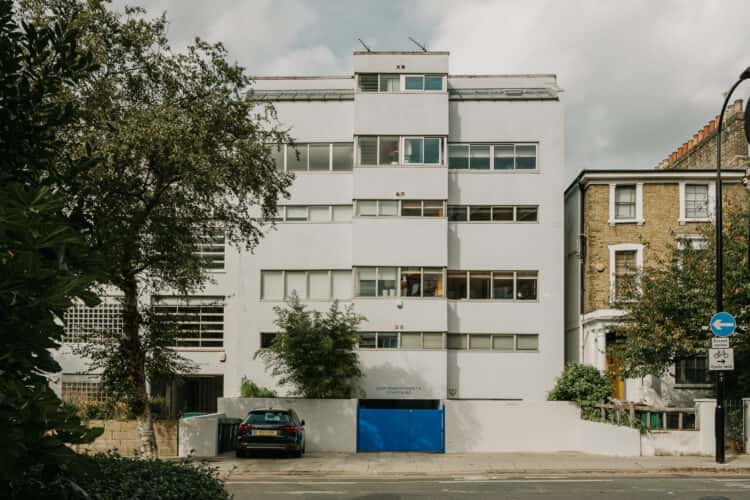From the Ground Up: six plots now for sale
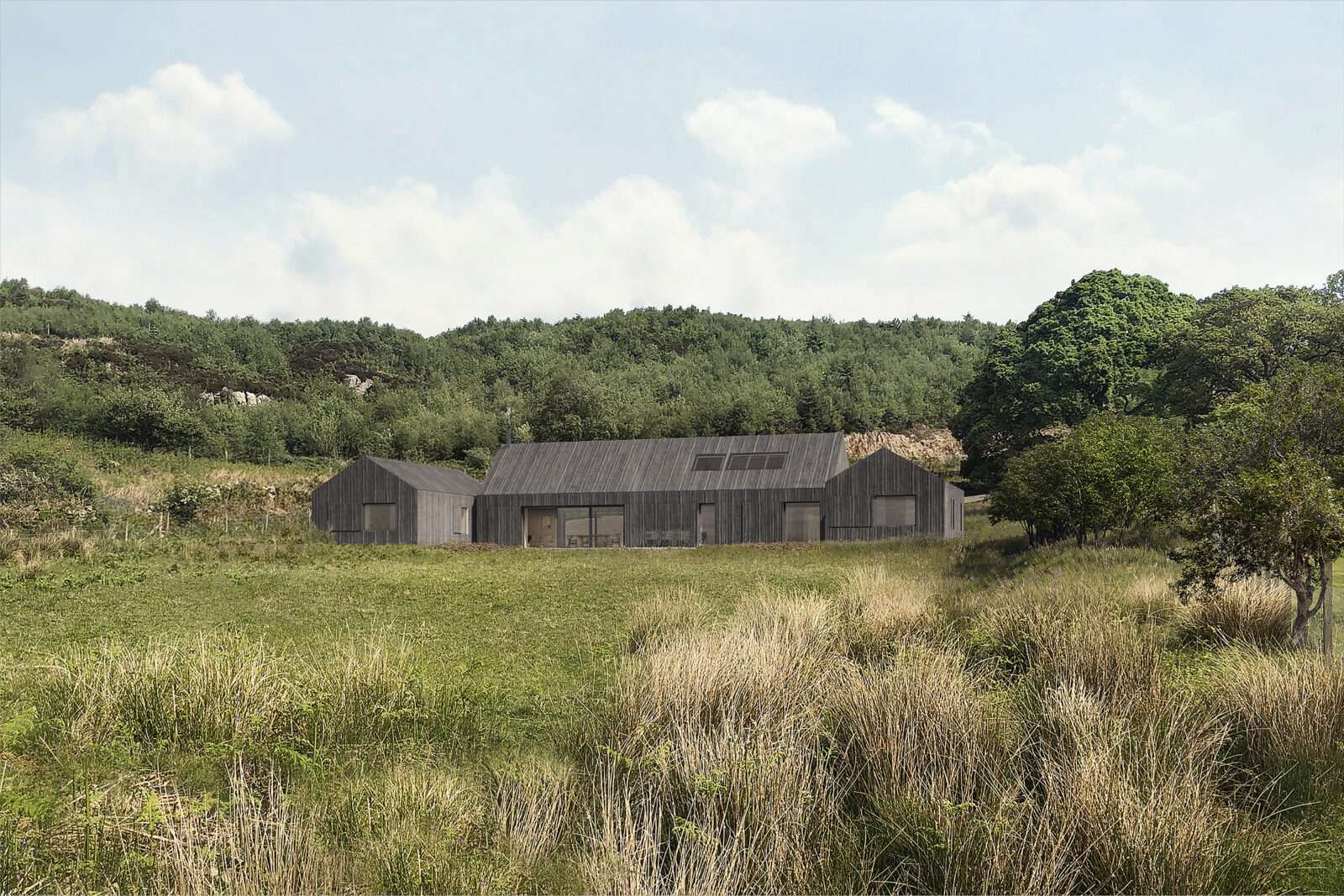
We’ve all harboured a fantasy of a DIY project – and the hard-earned sense of achievement that comes with self-building. After all, what could be more rewarding than a home constructed by you, entirely for you? Well, it’s time to stop dreaming and start doing, as we’ve six sensational plots with planning permission among our listings – from a vernacular-inspired build in the Highlands to a quiet garden-focused house in south-west London. Hard hats at the ready.
St Margaret’s Road, St Margaret’s Bay, Dover, Kent
A self-build by the sea sounds enticing enough – and that’s before you’ve even seen the plans. Conceived by award-winning architect Guy Hollaway, the concept is impressive: a 2,200sq ft four-bedroom house with an east-facing terrace (to make the most of those spectacular seaward views), taking the place of an existing structure on the site. Materials will be at the fore here, though simplicity is the guiding principle: think concrete and oak, lent all the drama and texture they need by the play of coastal light let in by extensive glazing. Naturally, the outside’s looking good too, its pebble-studded façade a neat nod to the shingle shore that’s just a short walk away.
Bedford Road, London SW4
A plot in London is a rare jewel indeed – let alone one that affords such space and calm in Zone 2. Mina Shafik’s design for this site is a clever one: set back from the street and surrounded by gardens and allotments, it’s to be centred around its own landscaped gardens. Rather than imposing itself upon the site, the building has been designed to sit quietly among its environs, with only a lightweight pavilion visible from outside; the majority of the living spaces, meanwhile, will be at lower-ground level. Think that sounds a bit gloomy? Think again. The double-height hall connecting the two floors and overlooking the basement courtyard garden has one wall of just glass, illuminating the spaces down here with hazy borrowed light.
Olmstead Green, Castle Camps, Cambridgeshire
We love a bit of site-specific context, which makes this project all the more thrilling a prospect. It’s been cleverly conceived by Richard Hawkes, a onetime self-builder who, having designed the country’s first Passivhaus (for Grand Designs), set up his own practice, now known for creating sustainable setting-sensitive architecture in the countryside
This project is no less dynamic than that early one: designed for a narrow corner of Castle Camps, a former RAF airbase not far from Saffron Walden, Hawkes’s design incorporates high levels of insulation, airtightness and an array of photo-voltaic panels, and takes cues from the blueprint of the de Havilland Mosquitos that flew out from here during World War II, with a timber-ribbed ‘fuselage’ and angled wings. And while the camouflage-like pre-patinated copper cladding leans into the idea, it serves a higher purpose too, blending the house into its remarkably rural surroundings, set to flourish further with the help of Squires Young Landscape Architecture, who have specified new hedgerow planting, a wildflower meadow, breeding boxes for birds, owls and bats and a seasonal reed-bed pond in the design.
Minet Road, London SW9
Another London plot, this time in Camberwell’s Minet Conservation Area. The idea is to build a four-bedroom house with a garden – the second of a pair drawn up by architect TG Vanner. The concept is a relatively simple one, though its specifications mean the effect will be one of great sophistication. An upside-down layout means the peaceful bedrooms will be downstairs at lower-ground level, surrounding a series of light wells that dispel any notion of basement living. The upper floor, meanwhile, housing an expansive kitchen and sitting room, has been conceived as a single pavilion-like space, with a flat sedum roof and overhanging eaves, hidden from view from the street by a brick wall.
That living roof gives some indication of TG Vanner’s ecological considerations for the project, which has been designed to be close to Passivhaus standards. Aluminium-framed triple-glazed windows have been specified throughout, for instance, while the underfloor heating will be powered by solar tubes. Good stuff.
Twyford Bury Lane, Bishop’s Stortford, Hertfordshire
For many building their own home, the desire is not to simply recreate the old two-up, two-down model, but rather to enact something individual – radical, even. If that’s your mindset, the plans for this plot near the buzzy market town of Bishop’s Stortford may well get your cogs whirring. Arranged across a single storey, the house has been conceived by Studio SDA, which took inspiration from a deep-sea sponge when coming up with its distinctive radial shape, housing five bedrooms, vast open-plan spaces and a clutch more discrete, peaceful rooms across two rings. Inner rooms will overlook a glazed courtyard, while those on the outer circle will have views of parkland beyond.
Such biomimicry should, according to the architects, enhance any occupant’s relationship to the world outside – something called biophilia. We can see how. Sitting low in a slope and constructed using local clay and flint (as well as concrete), the house will be very much of the land – a feeling intensified by the expansive glazing designed to break down the separation between indoors and out. That said, for all the loveliness outside the windows, it’s looking pretty good on the inside too…
Dunmore, West Loch Tarbert, Argyll
Loyal Journal readers will remember our trip to the Highlands, where we met up with Mary Arnold-Forster to talk to her and her client about the blackhouse-inspired building they’d completed there. If, like us, you were immensely jealous of that extraordinary home, you’ll be thrilled to see these plans on the market. Overlooking West Loch Tarbert towards Gigha, the wild site is exactly the kind Mary enjoys working on – and the design she’s come up with for it is perfectly reflective of her sensitive, vernacular-focused and craft-led approach to building in such places.
Similarly informed by the conventional rural buildings once dominant in this part of the country, the house will be simply clad in native larch. But for all its echoing of local architecture, this house is far from trad. Inside, underneath dramatically pitched ceilings, things have been spec’d to feel a little more Scandi in flavour, brightened by rooflights and the large windows piercing the walls. With convivial, communal living at the design’s core, the bedrooms will be sequestered in wings to the side of a large open-plan central section. And while all rooms will be blessed with exceptional views (we’re in the Highlands, after all), it’s that main family space that will really reap the benefits of the ever-changing light here, thanks to the floor-to-ceiling glazing that gives on to sloping pastures and the loch beyond.
